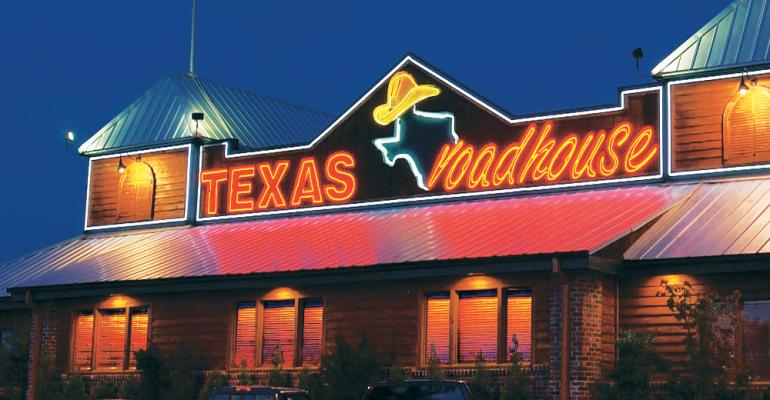Texas Roadhouse Inc. continued generating strong sales in the company’s second quarter ended June 27, with same-store sales rising 4 percent, almost all of it because of new customers.
That made it easier for the chain’s CEO, Kent Taylor, to say this:
“We encourage all our competitors to do as much delivery as they can so they can deliver lukewarm food to the people who order it,” he said on the company’s earnings call on Monday. “We’ll stick to our guns on this.”
Delivery is the single, biggest trend in the restaurant industry at the moment, with just about every publicly traded restaurant company working on some form of delivery program — including a large number of Texas Roadhouse’s casual dining competitors.
Yet the Louisville-based chain is eschewing the idea. To be sure, the company’s consistent sales and traffic growth mean the chain doesn’t have to push delivery to regain customers.
But company executives also say that delivery hurts the product. And they say that delivery orders come during peak hours when the company is busy, which could hurt in-store operations.
“Those people are going to call between 6 and 8 when we’re busiest, and our kitchens are already at pretty high capacity,” company president Scott Colosi said. “I’m not sure operationally it will be the best thing for us to be advertising delivery.”
“It’s easy for a restaurant who is underutilizing their kitchens and have a lot of negative traffic and want to add delivery,” he added, “We’re just in a different position.”
Indeed, Texas Roadhouse’s same-store sales results have been at or near the top among publicly traded casual-dining restaurants for several quarters now. And executives said that sales have improved so far in the third quarter.
At a time when consumers are clearly shifting their spending away from restaurants with wait staff, the steak chain has bucked the trend.
One big reason for the chain’s success, at least according to its executives, is the company’s insistence on holding the line when it comes to prices — despite rising labor costs.
Wage rates increased 6 percent in the quarter, which drove labor costs as a percentage of sales by 133 basis points. That hurt restaurant margins, which fell 25 basis points to 19.4 percent of sales — despite higher same-store sales.
Texas Roadhouse did raise prices by a half a percent in the quarter, but executives said they eschew more aggressive increases despite demand for the chain, and they believe it’s working for them.
“It’s not in the DNA of our company,” Colosi said. “We keep our prices very aggressive. We just don’t take the next day’s sales for granted. We see how tough it can be in the restaurant business, especially casual dining, when you let prices get away from you.
“There’s pressure on wage rates. But we just don’t take anything for granted when it comes to traffic counts and guest loyalty. Historically, our operators have figured out ways to help grow traffic counts to help us deal with inflation. That’s the model we’re going to stick to.”
Executives admit that the strategy can hurt profits, as it did in the second quarter. “Sometimes we take it on the chin with margins, but we’re protective of the business,” Colosi said. “We’re strengthening the business.”
While Texas Roadhouse has avoided price increases and delivery, the company is not avoiding online ordering and mobile app development, both of which are increasingly popular among restaurant executives.
The company’s mobile app is available in just more than 200 locations. The app enables consumers to order and pay and get on the wait list. Colosi said that the app will “probably be nationwide in the first quarter of next year.”
And the chain now has online to go ordering in nearly the entire system of 512 locations.
“We have seen a consistent uptick in to-go sales for some years now,” Colosi said. “And we do know the increases in online to-go have not come at the expense of dine-in sales.”
The company watches those sales closely. And executives view those sales differently than delivery — because customers come into the store.
“We’re very much a hospitality-driven company,” Colosi said. “We much prefer you come in and dine with us and get that hospitality. If you want to order to-go, you still get hospitality from our people.”
Contact Jonathan Maze at [email protected]
Follow him on Twitter at @jonathanmaze





